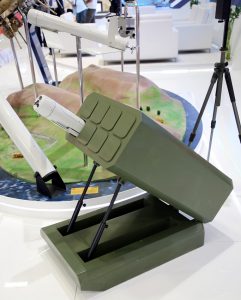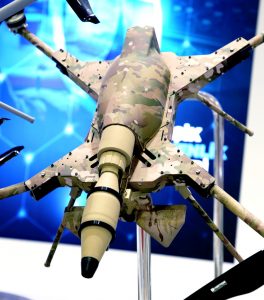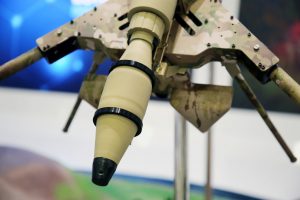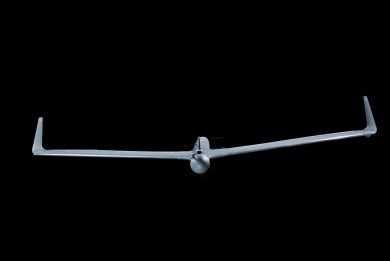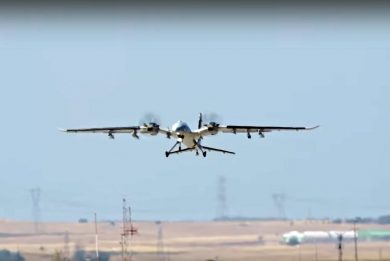
STM loitering munitions evolve
By Paolo Valpolini
With its Kargu rotary wing loitering munition in service with Turkish Land Forces since2018 and with an export customer since 2021, the system being now combat proven, and with its fixed wing Alpagu loitering munition to be delivered to Turkish Land Forces within this year, STM is continuously developing its products to keep up with its customers’ requirements.
The Alpagu munition has been submitted to a weight-reduction programme, and thanks to improvements in avionics, mechanical parts and warhead its take-off weight is now 1.9 kg, the air vehicle and the pneumatic launch tube weighing 3.5 kg. The anti-personnel warhead of the production system weighs 300 grams and is made of plastic explosive with embedded an undisclosed number of 4 mm cubes adding fragmentation effect to the explosive one. The R&D department at STM is currently working on two new types of warheads for the Alpagu, a thermobaric and an armour piecing one. In the STM stand at IDEF 2021 the new multiple launcher was also exhibited; the one on show was an 8-cell system, with two rows of four tubes, however according to STM dedicated launchers with a different number of tubes can easily be produced. An external antenna was also exhibited, which allows doubling the range up to 10 km.
This can also be used by the Kargu, the VTOL loitering munition, which also considerably evolved from the original design seen in 2017, some people relating to it as the Kargu 2. The endurance has been increased from slightly over 10 minutes to 30 minutes, the range is now close to 7 km and can be brought to 12 km using the aforementioned antenna.
The standard anti-personnel payload has been redesigned, the warhead being now similar to that of the Alpagu, its weight being however much higher, up to 1.3 kg. The shape allows understanding that fragments would be spread on a quite wide angle, making it a sort of “flying Claymore”.
As for the Alpagu, a thermobaric warhead is under development, and according to EDR On-Line sources it is nearly ready. Another version of the Kargu will feature a radio frequency seeker, working in the VHF/UHF band, coupled to an armour-piercing warhead. As stated by STM representatives, this will make the Kargu a “mini Harop”, citing the Israeli anti-radiation drone; however the latter is more oriented against air defence radars, while the frequency coverage of the Turkish system makes it more suitable against command centres, signal assets and command vehicles.
STM is developing new capabilities that will bring its loitering munitions to operate in swarms. To this end it is developing a number of features such a central/distributed communication infrastructure, inter-UAV communications, formation capability, sense and avoid capacity, targeting and prioritisation, and target sharing, in order to bring to bear effective swarm attacks. With increasing threats against satellite-based navigation systems, STM is also carrying out a development project, known as Kerkes, aiming at give its drones the ability to operate independently from GNSS systems.
Photos courtesy P. Valpolini

